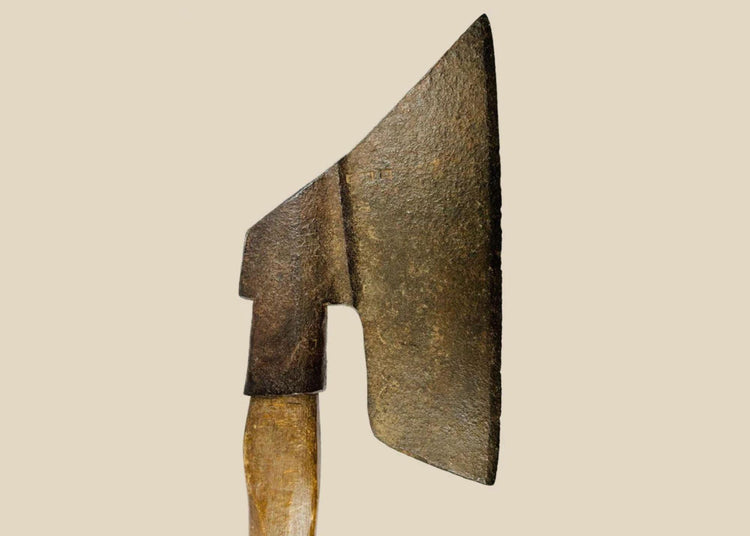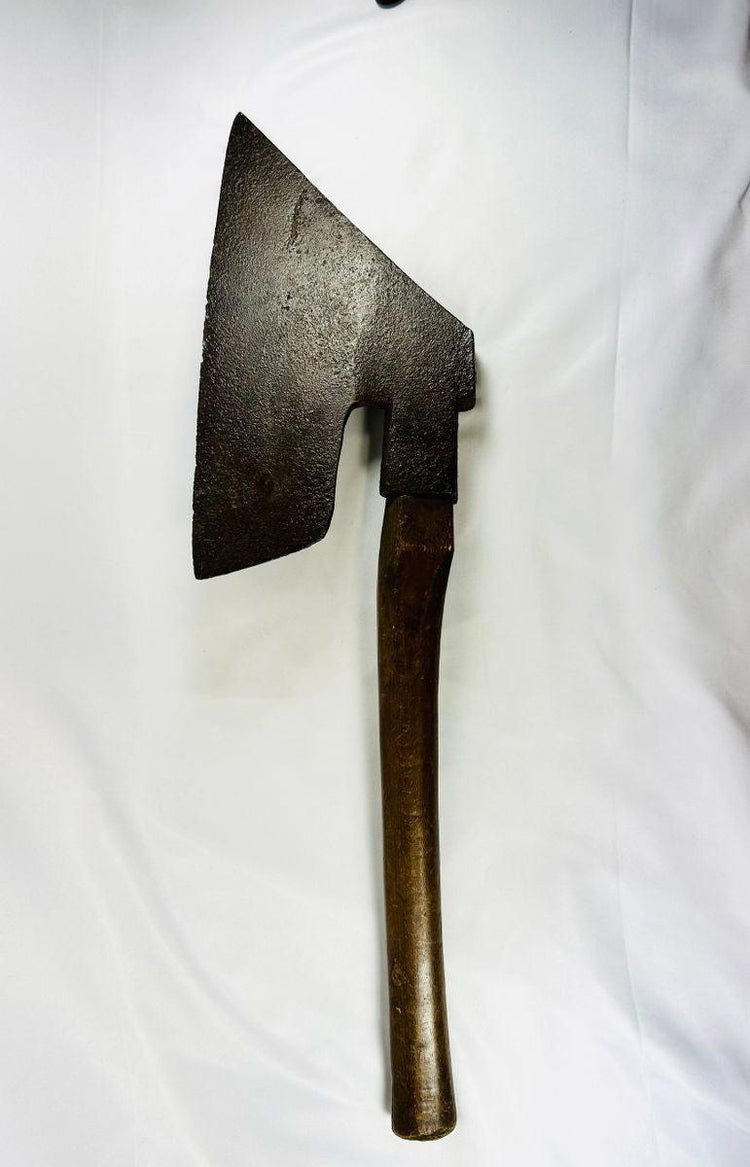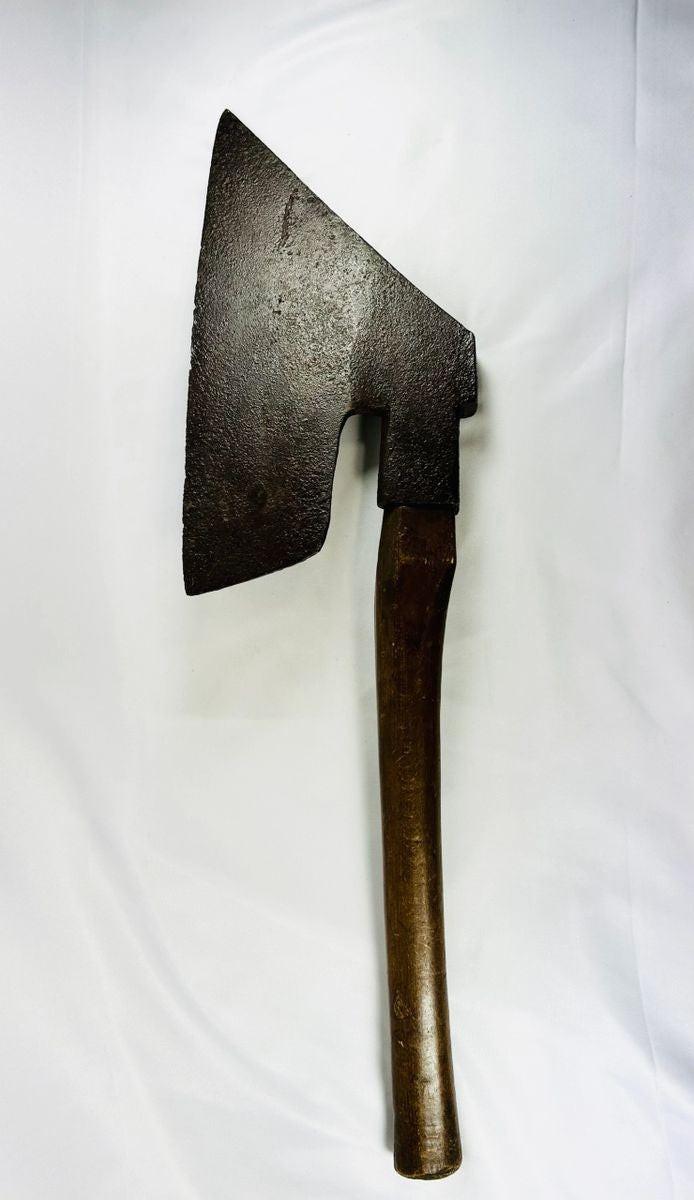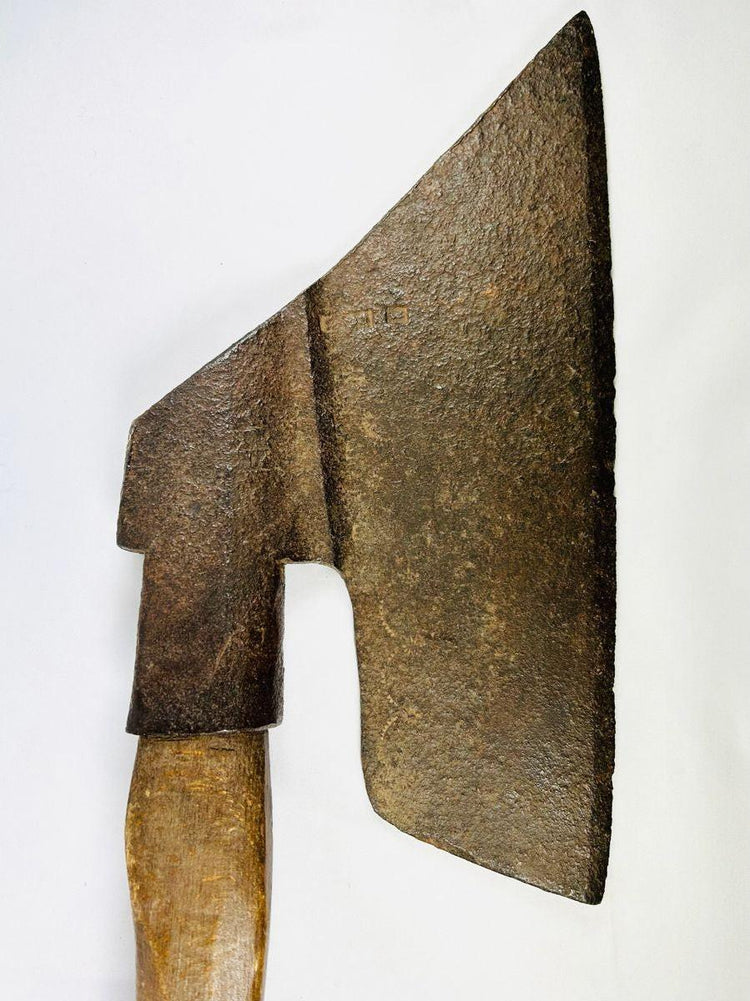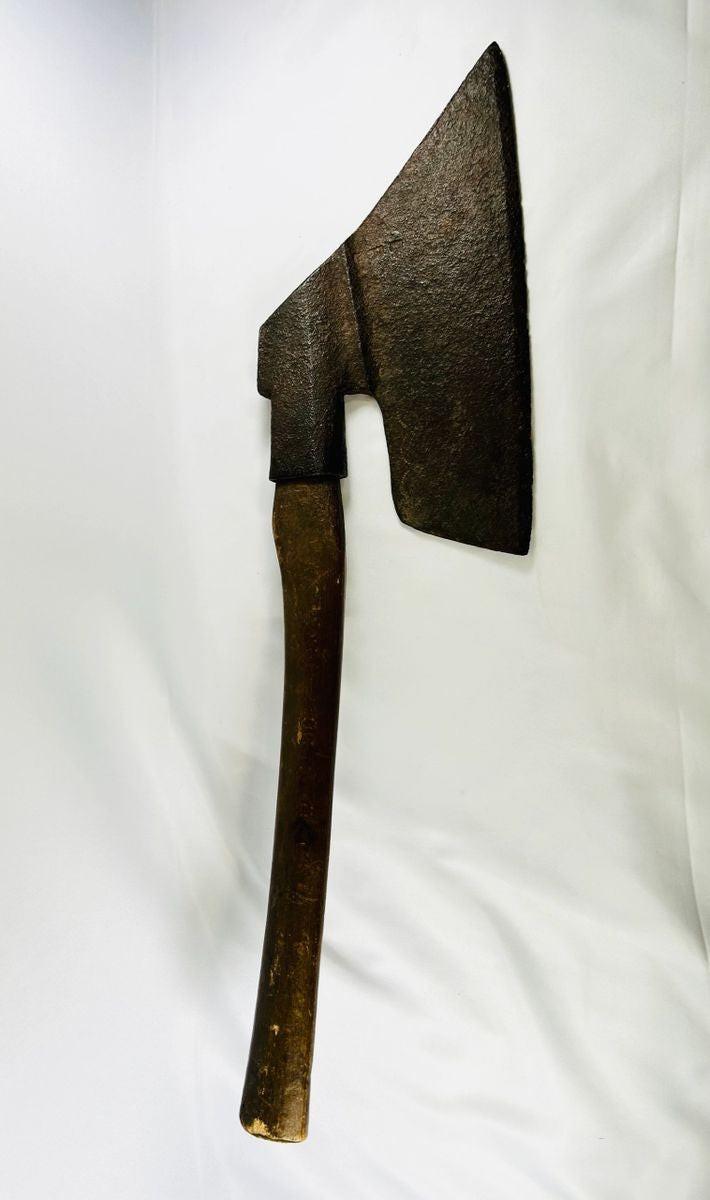German Goosewing Hewing Axe | Hand-Forged Iron Blade with Maker’s Marks | 18th–Early 19th Century CE
Description
More
Less
Historical Context & Origin
Region: Central Europe (Germany, with later provenance to Scotland)
Material: Hand-forged iron blade with hardwood handle (later replacement)
Period: 18th–Early 19th Century CE
Description
This exceptional hewing axe is a fine example of the German goosewing form, a traditional woodworking tool renowned for its broad, asymmetrical wing-shaped blade. Hand-forged from iron, the blade displays a rich, timeworn patina and is stamped with initials and two marks, possibly identifying its maker or region of origin. The robust integral socket reinforces the connection to the wooden handle, which is a later but sympathetic replacement. Measuring 28 inches long by 7 inches wide, this axe exemplifies the craftsmanship and functional beauty of European timber-framing tools.
Features
- Classic goosewing design with broad, wing-shaped cutting edge
- Hand-forged iron construction with natural aged patina
- Distinct maker’s marks and initials stamped on the blade
- Reinforced socket for handle stability
- Later replacement handle paired in keeping with the blade’s character
Cultural Significance
Goosewing hewing axes were indispensable tools for European timber framers, carpenters, and shipbuilders. Their unique form allowed artisans to hew logs into squared beams with precision, a vital step in traditional architecture and construction. Widely used across Germany, Austria, and neighboring regions, these axes represent the ingenuity of early European craftsmanship. Many were brought to the New World by settlers, shaping early colonial architecture and bridging European traditions with new frontiers.
Condition
The blade retains strong form and clear markings, with surface wear and patina consistent with age and prolonged use. The later handle replacement has been thoughtfully fitted, ensuring structural stability while preserving the axe’s historical integrity.
Dimensions (approximate)
Length: 28 in
Width: 7 in
Age
18th–Early 19th Century CE
Learn More
Deepen your understanding of European woodworking traditions and the historic development of goosewing axes: German Goosewing Axes & Historic Hewing Tools – Crafts of New Jersey
Explore more weapons, tools, and battlefield relics from across the ancient and early-modern world: Ancient Combat Artifacts, Armor & Weapons Collection – Relic And Rarity
Description
Historical Context & Origin
Region: Central Europe (Germany, with later provenance to Scotland)
Material: Hand-forged iron blade with hardwood handle (later replacement)
Period: 18th–Early 19th Century CE
Description
This exceptional hewing axe is a fine example of the German goosewing form, a traditional woodworking tool renowned for its broad, asymmetrical wing-shaped blade. Hand-forged from iron, the blade displays a rich, timeworn patina and is stamped with initials and two marks, possibly identifying its maker or region of origin. The robust integral socket reinforces the connection to the wooden handle, which is a later but sympathetic replacement. Measuring 28 inches long by 7 inches wide, this axe exemplifies the craftsmanship and functional beauty of European timber-framing tools.
Features
- Classic goosewing design with broad, wing-shaped cutting edge
- Hand-forged iron construction with natural aged patina
- Distinct maker’s marks and initials stamped on the blade
- Reinforced socket for handle stability
- Later replacement handle paired in keeping with the blade’s character
Cultural Significance
Goosewing hewing axes were indispensable tools for European timber framers, carpenters, and shipbuilders. Their unique form allowed artisans to hew logs into squared beams with precision, a vital step in traditional architecture and construction. Widely used across Germany, Austria, and neighboring regions, these axes represent the ingenuity of early European craftsmanship. Many were brought to the New World by settlers, shaping early colonial architecture and bridging European traditions with new frontiers.
Condition
The blade retains strong form and clear markings, with surface wear and patina consistent with age and prolonged use. The later handle replacement has been thoughtfully fitted, ensuring structural stability while preserving the axe’s historical integrity.
Dimensions (approximate)
Length: 28 in
Width: 7 in
Age
18th–Early 19th Century CE
Learn More
Deepen your understanding of European woodworking traditions and the historic development of goosewing axes: German Goosewing Axes & Historic Hewing Tools – Crafts of New Jersey
Explore more weapons, tools, and battlefield relics from across the ancient and early-modern world: Ancient Combat Artifacts, Armor & Weapons Collection – Relic And Rarity
You May Also Like


















